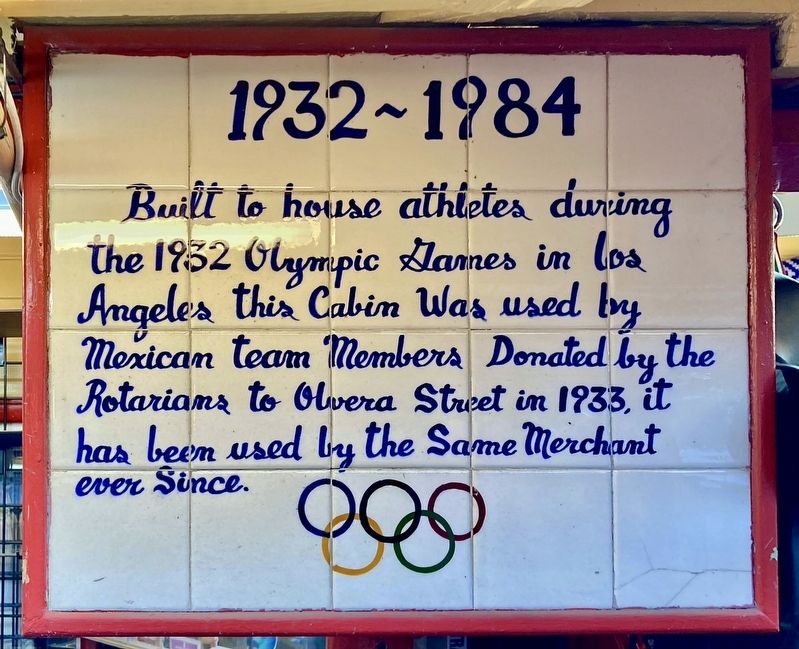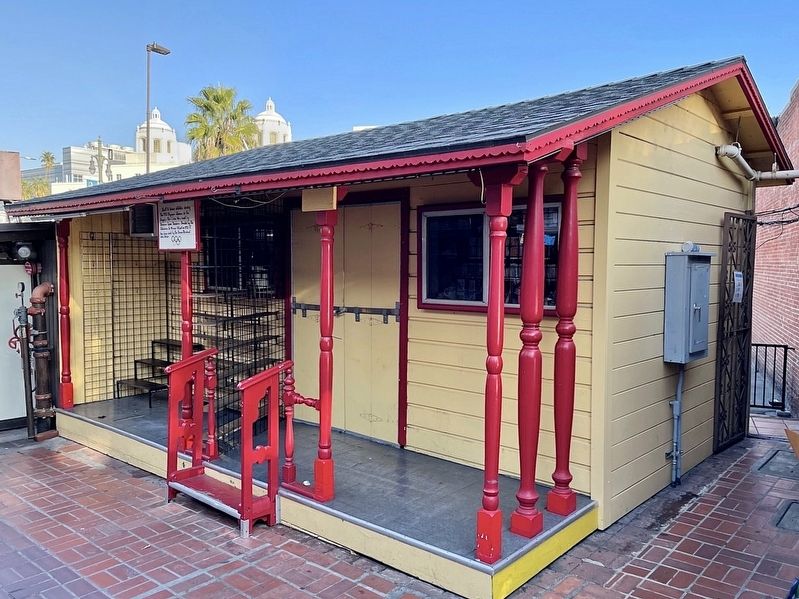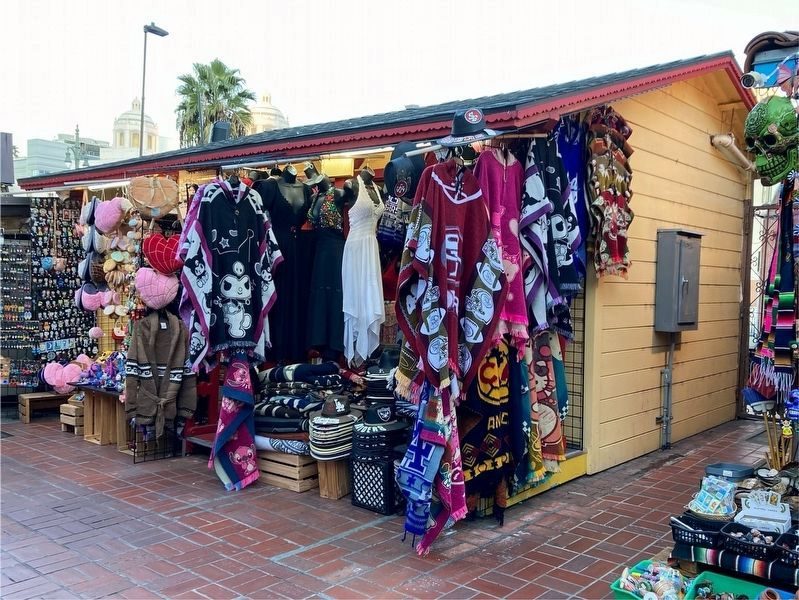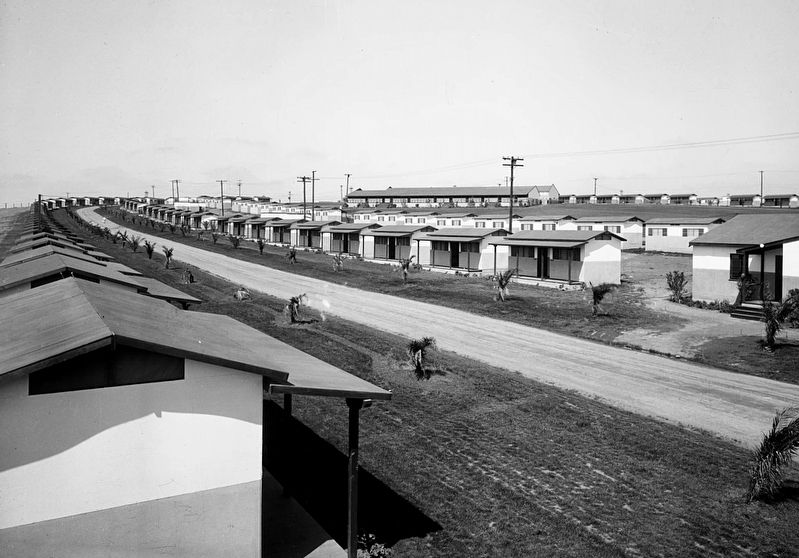Downtown Los Angeles in Los Angeles County, California — The American West (Pacific Coastal)
1932 Olympic Village Cottage
1932 - 1984
Built to house athletes during the 1932 Olympic Games in Los Angeles, this cabin was used by Mexican team members. Donated by the Rotarians to Olvera Street in 1933, it has been used by the same merchant ever since.
Topics. This historical marker is listed in this topic list: Sports. A significant historical year for this entry is 1932.
Location. 34° 3.464′ N, 118° 14.259′ W. Marker is in Los Angeles, California, in Los Angeles County. It is in Downtown Los Angeles. Marker is on Olvera Street south of Cesar E Chavez Avenue, on the left when traveling south. Touch for map. Marker is at or near this postal address: E-19 Olvera St, Los Angeles CA 90012, United States of America. Touch for directions.
Other nearby markers. At least 8 other markers are within walking distance of this marker. Zanja Madre (a few steps from this marker); Pure Water from Many Sources (a few steps from this marker); Charlie Chaplin’s The Kid (a few steps from this marker); Pelanconi House (a few steps from this marker); Old Winery (within shouting distance of this marker); Sandstone Trough (within shouting distance of this marker); Sepulveda House (within shouting distance of this marker); Hammel Building (within shouting distance of this marker). Touch for a list and map of all markers in Los Angeles.
Regarding 1932 Olympic Village Cottage. Located in Baldwin Hills at the end of West Vernon Place and west of Crenshaw Boulevard, the Village consisted of 550 portable houses designed and built by H.O. Davis, each measuring 24 by 10 feet. Each house contained two 10 by 10-foot rooms with a connecting shower. Each room housed two athletes, with two beds, two chairs, a dresser, and a lavatory.
Davis enhanced the village with five dining halls, a post office, a radio station, a hospital, a dental laboratory, a fire station, a movie theater, and a 600 foot tall administration building. The total cost for the construction of the village came to about $500,000.
1,836 male athletes lived there for the duration of the Games of the Xth Olympiad. And in accordance with gender norms of the time, 126 female athletes were excluded from the celebrated village and placed in the Chapman Park Hotel in Mid-Wilshire.
The Olympic committee was sensitive to the fact that sending an athlete around the world was very expensive. They created the cost-effective plan to sell every house and all furnishings at the end of the festivities, and only charged the athletes $2 a night to stay in the village.
There are no remnants of this village in Baldwin Hills today because every house was sold for $140, or $215 if furnished. Dozens of houses were sold to Californians, many were sent around the United States (including Hawaii), and some were even sent across the world to Germany, Japan, and South Africa.
When the Olympics returned to Los Angeles 52 years later in 1984, the committee saved millions of dollars by housing athletes in dormitories on the USC, UCLA, and UCSB campuses. This contributed to the ‘84 games ending with a $232.5 million financial surplus.
Credits. This page was last revised on February 13, 2024. It was originally submitted on January 25, 2024, by Craig Baker of Sylmar, California. This page has been viewed 121 times since then. Photos: 1. submitted on January 25, 2024, by Craig Baker of Sylmar, California. 2. submitted on January 26, 2024, by Craig Baker of Sylmar, California. 3. submitted on February 13, 2024, by Craig Baker of Sylmar, California. 4. submitted on January 26, 2024, by Craig Baker of Sylmar, California.



